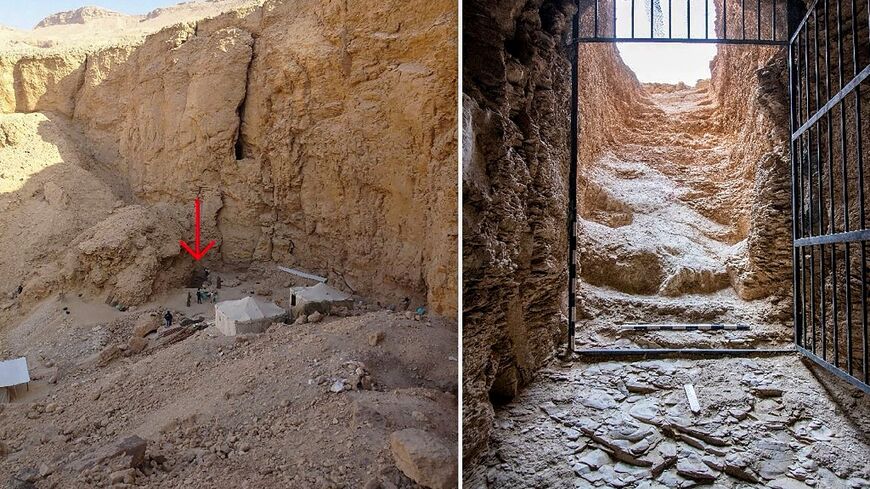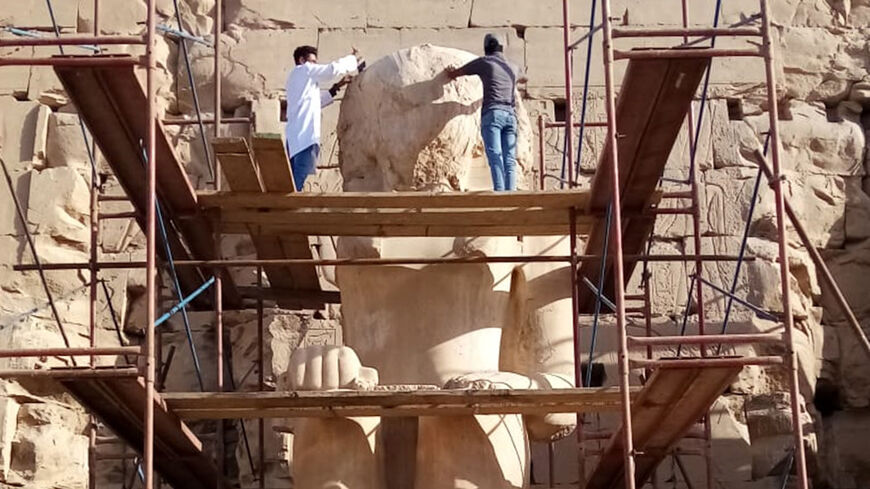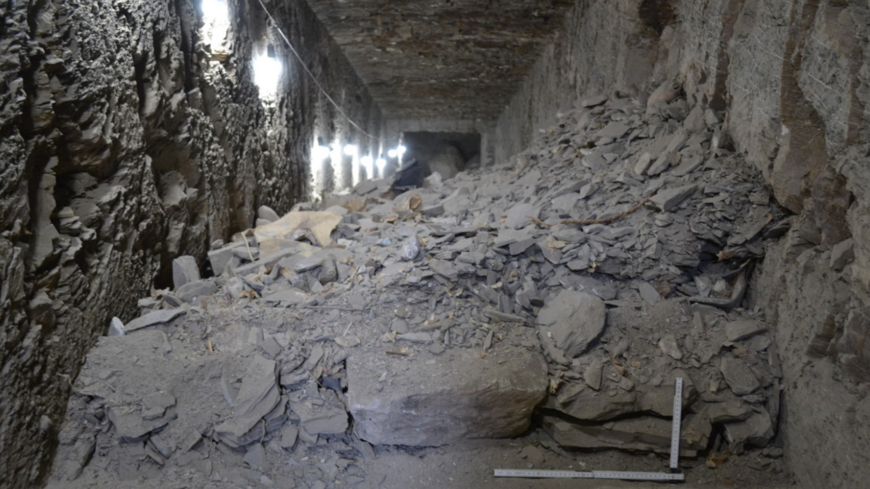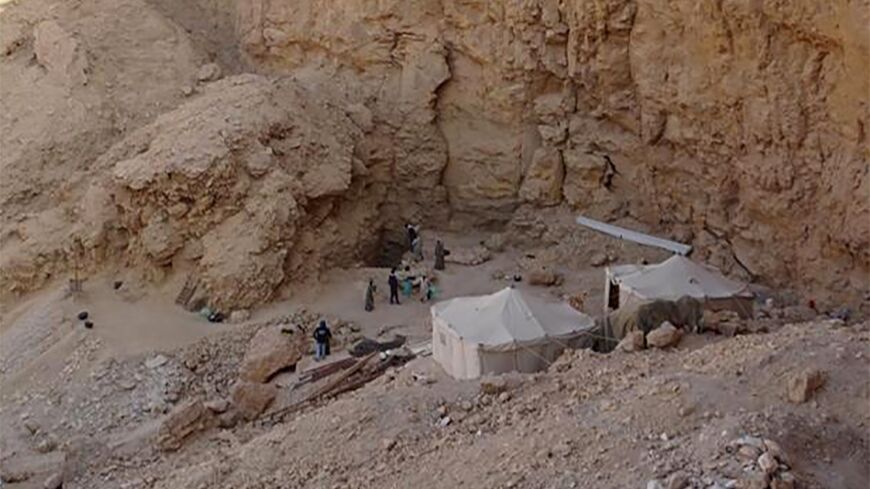Egypt celebrates first royal tomb discovery since 1922: What we know
The 3,500-year-old tomb belongs to King Thutmose II, who ruled Egypt during its 18th dynasty.
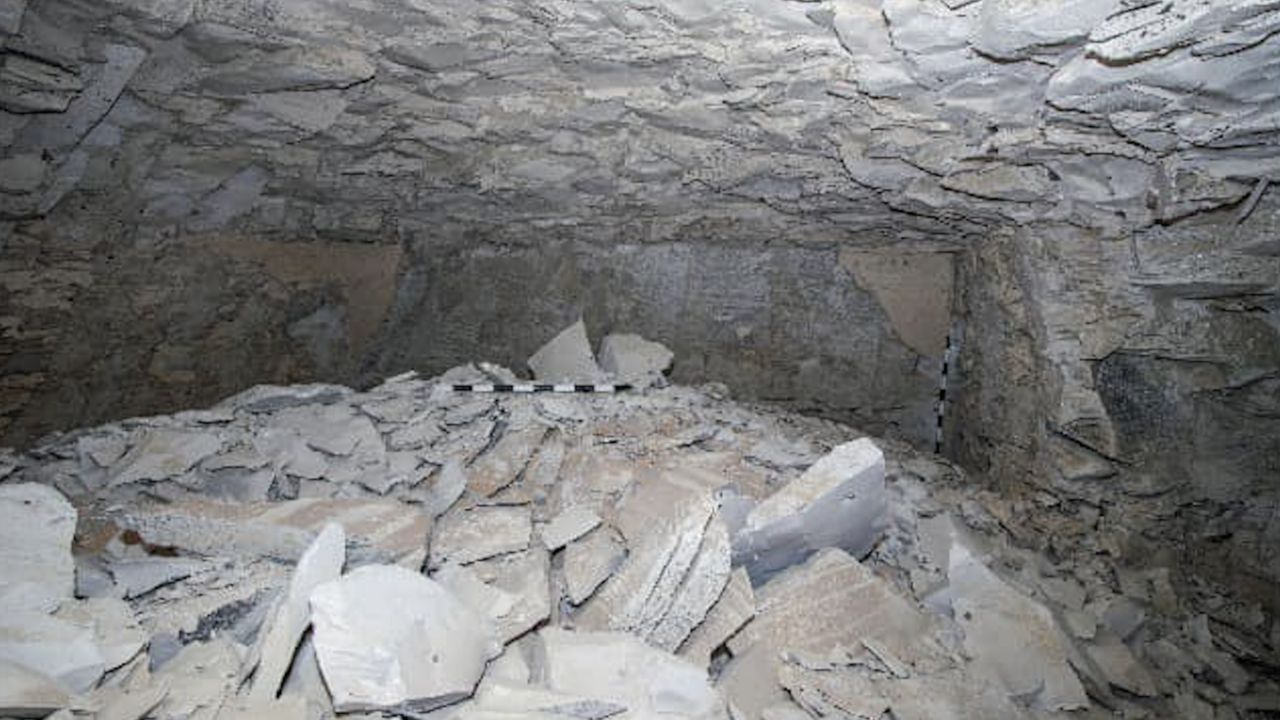
A joint Egyptian-British archaeological mission has uncovered the tomb of King Thutmose II, the first royal tomb discovered since that of King Tutankhamen in 1922.
The roughly 3,500-year-old tomb was found in Luxor, the Egyptian Ministry of Tourism and Antiquities announced on Tuesday. King Thutmose II was the fourth and final pharaoh of Egypt’s 18th dynasty. His mummy, discovered much earlier in 1881 at another site, is now located at the National Museum of Egyptian Civilization.
The tomb of King Thutmose II was long thought to be located in the Valley of the Kings in Luxor, where the tombs of King Tutankhamen, Thutmose I and III and Queen Hatshepsut have been discovered. Yet it was found west of the Valley of the Kings, in the mount of Thebes area.
Secretary-general of Egypt’s Supreme Council of Antiquities Mohamed Ismail Khaled called the finding one of the most significant in decades.
In 2022, the archaeological team began excavation work on the tomb, which was initially suspected to be that of a royal consort. The team later found artifacts including fragments of alabaster jars inscribed with the names of King Thutmose II and his wife, Queen Hatshepsut, according to the Egyptian Ministry of Tourism and Antiquities.
According to Egypt’s State Information Service, the head of the Egyptian archaeological team, Mohamed Abdel Badei, said, “The tomb was found in poor condition, flooded in antiquity shortly after the king’s death. Water damage caused severe deterioration, leading to the loss of many original contents, which are believed to have been relocated during ancient times.”
Badei said that teams had restored “portions of fallen plaster adorned with intricate designs including blue inscriptions, yellow star motifs and elements of the Book of Amduat, a key religious text used in royal tombs.”
Discovery of the Tomb of King Thutmose II: The Last Missing Royal Tomb of the 18th Dynasty. 1st Royal Tomb Found Since Tutankhamun’s in 1922. More info https://t.co/F19KRPVnhS #Egypt #Egyptology #Archaeology @indyfromspace @yukinegy @SilviaZago6 @chrisnaunton @Cambridge_Uni pic.twitter.com/k2eAsxea8H
— Luxor Times (@luxortimes) February 18, 2025
Piers Litherland, who led the excavation team from the UK’s New Kingdom Research Foundation, described the tomb as having a simple architectural design in keeping with tombs of contemporaneous kings, with one exception: a corridor the team suspects was created to remove the king’s body after the tomb flooded.
The excavation mission also found evidence that King Thutmose II's half-sister and wife, Queen Hatshepsut, carried out his burial rites. Hatshepsut, who later became pharaoh herself, is thought by many archaeologists to have wielded major influence on her husband's rule. Thutmose II's reign is speculated to have lasted either 13 years, from 1493 BC to 1479 BC, or just three years, from 1482 BC to 1479 BC.
